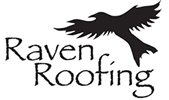What is Green Roofing?
“Green building” implies using environmentally sound building materials and techniques, using energy and other resources efficiently (recycling and reusing materials, when possible) and fostering a sense of community in the design of buildings.
Encouraging the use of environmentally friendly green building materials and techniques contributes to the long-term health, vitality, and sustainability of the region.
Selecting light colored materials that will reflect solar heat will help to keep down energy bills in cooling-based climates.

Light colored, reflective roofs are often referred to as cool roofs. In heating-based climates, darker roofs will absorb heat from the sun, reducing the amount of energy needed to heat the building.
The weight of the roofing material is also important to consider. The heavier the product, the more structural support is needed to hold the weight. The lifetime of the product is also very important. Durable products will last longer, require less maintenance, and reduce the amount of waste entering landfills.
Using materials containing reclaimed products, as well as materials that can be recycled after their use, will also achieve this goal.
At Raven Roofing we are a Cedar Park Roof Contractor that recycles 100% of the singles removed from your roof.
Green Roofing Benefits
In addition to the environmental, health, and safety benefits of green building, residents benefit from increased affordability through lower energy costs from heating and air conditioning, less water consumption, lower costs from waste disposal, and reduced long-term maintenance.
Affordability
- Lower energy costs from heating and air conditioning
- Less water consumption
- Lower costs from waste disposal
- Reduces long-term maintenance
Reduces impacts on the environment
- Decreased consumption (use of recycled or reused materials)
- Decreased reliance on toxic materials
- Efficient use of energy
- Efficient use of water
Improves health and safety
- Improves air quality
- Reduces the use of toxic materials and processes
- Minimizes the use of vinyl and pressure treated lumber
Promotes sustainability by design
- Improves energy efficiency
- Encourages quality construction and design
- Lessens the stigma often attached to low income housing
- Promotes a cohesive sense of community
